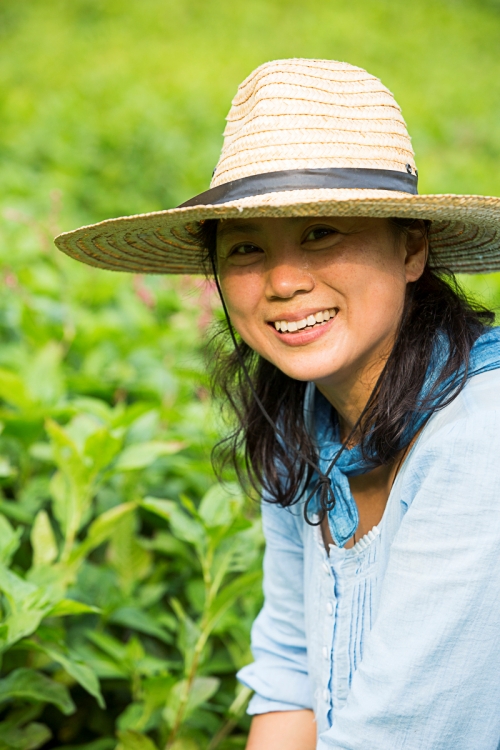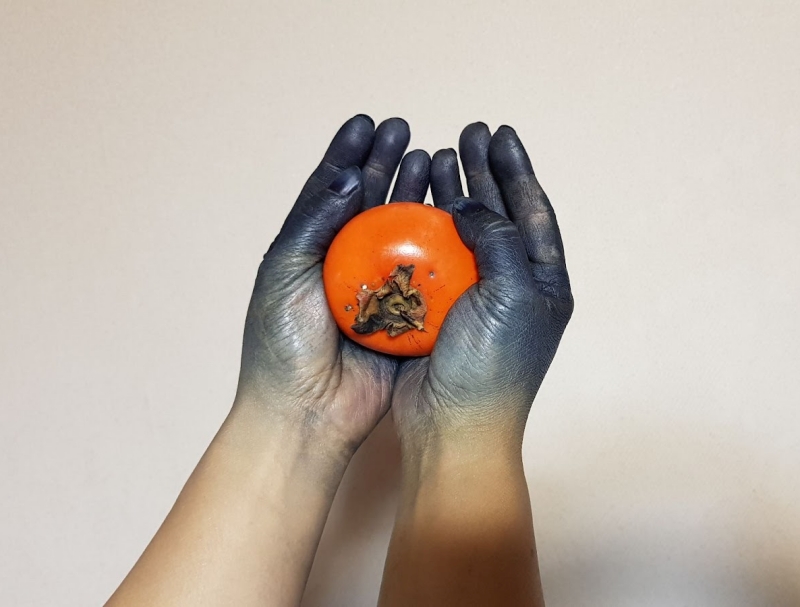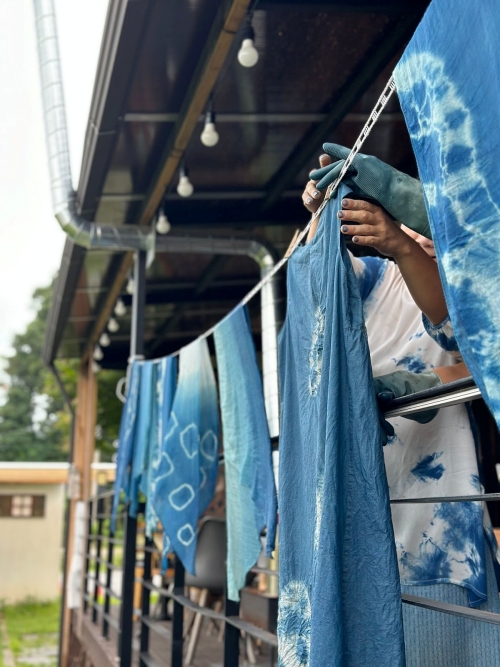- 한국어
- English
- 日本語
- 中文
- العربية
- Español
- Français
- Deutsch
- Pусский
- Tiếng Việt
- Indonesian
By Honorary Reporter Myrtle Iris Villaraza from Philippines
Photos = Kindigo
Indigo dyeing, an ancient art found all over the world, uses dye from indigo plant leaves, known as jjok in Korean for its deep blue hue.
In 2012, Jang Su-ju founded the brand Kindigo in Yongin, Gyeonggi-do Province, and is now its CEO and chief indigo dyer. Seeking to promote and preserve traditional indigo dyeing, the company hosts workshops and an annual indigo festival, conducts research, sells handcrafted indigo products, and runs a farm for cultivating Korean indigo and producing niram (indigo paste) without harmful chemicals.
The following are excerpts from an email interview with Jang from July 23 to Aug. 2.

Jang Su-ju is CEO and chief indigo dyer at Kindigo.
How did your interest in indigo dyeing begin?
My interest began with my passion for nature and sustainability. In 1999, I started a "nature school" to reconnect children with the natural world. Around 2005, I discovered indigo dyeing while seeking healthier and eco-friendly options, particularly traditional fermentation methods which are water- and waste-efficient. I was drawn to this sustainable practice and vibrant color.
Korean indigo dyeing, with roots in the ancient Gojoseon Kingdom, faced near extinction during the Japanese colonial period and the Korean War but was revived in the 1970s. Feeling a duty to preserve this tradition, I committed to continuing its legacy.
What is special about Korean indigo dyeing?
Indigo dyeing using fermentation is quite different from regular methods using boiling for color extraction. Fermentation dyeing requires specific conditions for dyeing vats, and if the environment isn't right, the process won't work. In Korea, indigo dyeing requires a high level of skill and knowledge, in that masters of this craft have been designated National Intangible Cultural Heritage.
What led you to establish Kindigo?
I founded Kindigo to promote natural indigo dyeing and a healthier lifestyle, without the common use of harmful chemicals in the dyeing process. These chemicals damage both indigo's benefits and the environment. We use traditional Korean fermentation methods with safe materials like makgeolli (milky rice wine) and shell ash. Initially focusing on one-day classes, I realized the need for a more comprehensive approach. So I launched Kindigo to expand into product development, research and cultural activities.

Jang's hands are stained deep blue from using indigo dye.
Why is it important to have every stage of your production process done by hand?
We emphasize handcrafting at every stage of production to ensure safety and authenticity. In our programs, participants dye with their bare hands to experience this safe and natural process firsthand. Blue-stained hands are a badge of pride among practitioners, unlike dangerous methods requiring gloves. In an age of mass production, we value the handmade approach, promoting a slow but sustainable lifestyle. Kindigo products are crafted with domestic producers, not at factories.
What kind of research have you conducted on indigo?
While indigo has been known to be good for the skin and body, this was mainly based on ancient texts with no modern scientific basis. While recently pursuing my Ph.D., I studied the anti-inflammatory properties of chungdae, an indigo pigment derived from the indigo plant and published a research paper on it.
Do your indigo workshops and festivals have many foreign participants?
While most participants are Korean, we do have many from abroad every year due to their interest in indigo. Since few places offer the entire process from farming, dye extraction and fermentation to dyeing, we constantly receive inquiries from foreigners. Some even come to Korea specifically to learn indigo dyeing.

Participants in Kindigo's indigo dyeing class at the 2024 Indigo Festival hang their fabrics dyed with Korean indigo.
What should people know about Korean indigo?
Each region has its own indigo plants and dyeing methods that produce distinct colors. I hope to globally promote Korean blue or indigo by sharing its color, techniques and cultural value.
msjeon22@korea.kr
*This article is written by a Korea.net Honorary Reporter. Our group of Honorary Reporters are from all around the world, and they share with Korea.net their love and passion for all things Korean.